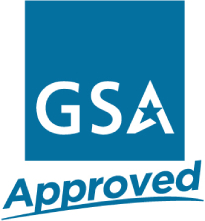Retractable Pediatric Emergency Tape - Broselow Compatible
Brand : Mila
- SKU:
- STMINI
- UPC:
- 7 18194 10297 3
- Shipping:
- Calculated at Checkout
Retractable Pediatric Emergency Tape - Broselow Compatible
Retractable Pediatric Emergency Tape - Broselow Compatible aka The New Dose by Growth mini pediatric tape. Improved Accuracy – Incorporates 2014 CDC NHANES data sets vs. others still using 2007. No folds or creases that skew measurements. Quicker Weights – Retractable design & smooth operation means no more unfolding large Length-Based Tapes. Quickly accessible with compact design that fits easily into pocket. Completely Compatible – Industry standard weight-color zones to use.
Retractable Pediatric Emergency Tape - Broselow Compatible Features:
- Improved Accuracy – Incorporates 2014 CDC NHANES data sets vs. others still using 2007. No folds or creases that skew measurements.
- Quicker Weights – Retractable design & smooth operation means no more unfolding large Length-Based Tapes. Quickly accessible with compact design that fits easily into pocket.
- Completely Compatible – Industry standard weight-color zones to use with your existing dosing aides
- Reduces Errors – Eliminates “wrong-end” measurements that account for nearly 5% of dosing errors
- Safer Dosing – Weights listed in kg for proper dosing and reporting
- MADE IN USA

Dimensions:
- Length: 2.75" inches
- Width: 2.75" inches
- Height: .75" inches
Additional Accessories:
- Ems Standard Pediatric Emergency Tape
- PediPro Pediatric Resuscitation System Kit - Roll Out
- PediPro Pediatric Resuscitation System Kit - Z Fold
- ALS Standard Pediatric Emergency Tape
- Broselow Pediatric Emergency Tape
- LSP Pediatric Immobilization Board
*If the healthcare provider incorporates a visual estimate of body habitus into the prediction, the accuracy of the estimate of actual patient weight is improved as confirmed in multiple studies. Specifically, for application the patient's length-based measurements zone if the child appears overweight. Thus, incorporating a visual estimate of whether the child is over-weight provides a simple method to predict weight that appears to be clinically relevant given the rise of obesity in the United States.











